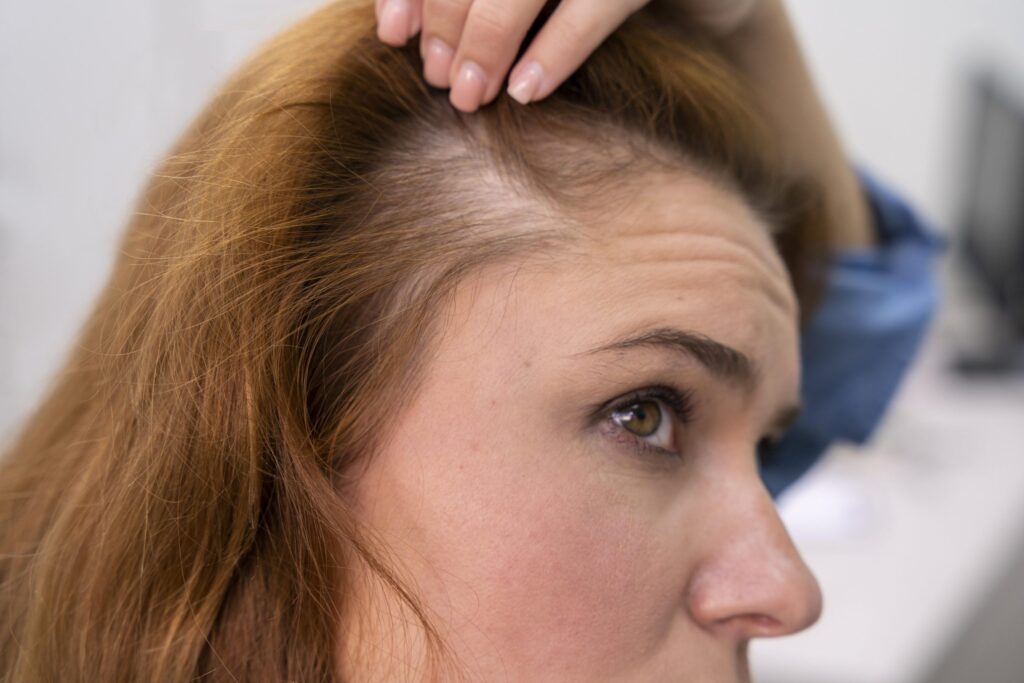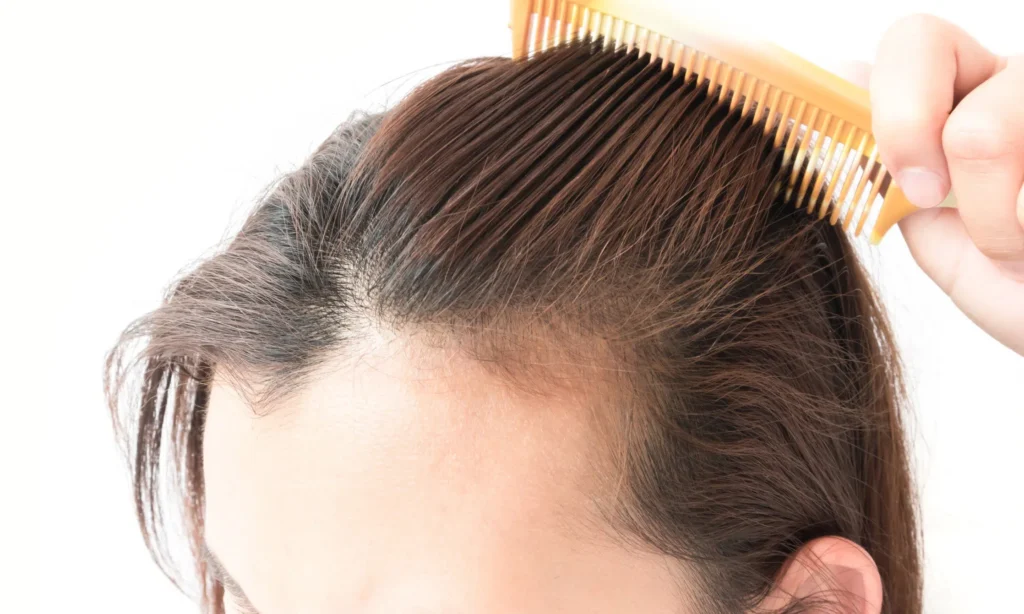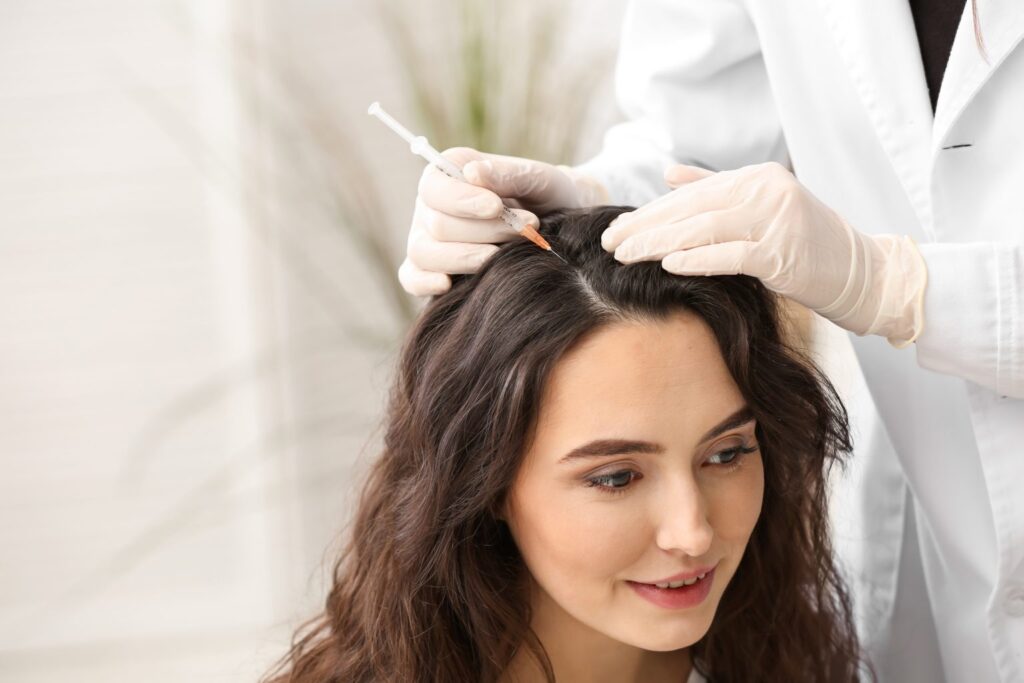
Hair transplantation is very important for everyone, regardless of gender. This is because hair loss and baldness can lead to serious self-confidence issues. The situation is no different for trans women, and may even be more serious. This is because most trans women place particular importance on appearing feminine during their gender transition. Hair plays a key role in this, and hair loss can lead to serious self-confidence issues. It can prevent them from feeling comfortable in society.
Hair transplantation is an important step, both physically and psychologically, in many transgender women’s journey to achieve a feminine appearance. However, another equally important step is the post-transplantation care process. This process ensures that the transplanted grafts take root healthily and helps facilitate a healing process that is compatible with hormone therapy.
İçindekiler
1. First 72 Hours: Be Careful and Protective
- Sleeping position: Sleeping with your head elevated for the first 3 nights is crucial to prevent damage to the grafted hair. Additionally, sleeping on your back with your head slightly elevated prevents swelling from spreading to your face.
- No touching: Do not touch the transplanted area with your hands. Even if you feel itchy, keep your hands away from this area.
- Protection: Protect yourself from the sun, wind, and dust. When going outdoors, you can use a hat or a soft, loose-fitting scarf (it should not be tight).
- Smoking/Alcohol: Avoid smoking and alcohol for at least one week. They affect your hormone balance and delay healing.
2. First Wash and Subsequent Days
- First wash: Typically performed 48–72 hours later using a special lotion provided by your doctor or clinic, with gentle movements after hair transplantation.
- Shampoo: Formulas without SLS, pH-balanced, and gentle are recommended. Fragrance-free formulas prevent skin reactions.
- Hair drying: Do not use a hair dryer. Pat dry with a towel and allow it to air dry.
- Tip: The skin of trans women undergoing estrogen therapy is generally more sensitive. Therefore, baby products or dermocosmetic brands may be preferred.
3. Compatibility with Hormone Therapy
- If you are undergoing estrogen or anti-androgen therapy, you have the advantage of reduced hair loss. However, this does not mean that all your hair will be preserved.
- You should not start using supportive products like finasteride or minoxidil without consulting your doctor. They may interact with hormones.
- Vitamin and mineral supplements tailored to your biological makeup, such as biotin, zinc, and vitamin D, support healing.
4. Sun and Physical Activity
- During the first month: Avoid direct sunlight. The transplanted grafts are sensitive to UV rays after hair transplant.
- Sports: Avoid strenuous exercise for the first 2 weeks. Sweating can increase the risk of infection. Light walks are appropriate.
- Pool/sea: Avoid for at least 1 month. Chemicals and bacteria can negatively affect the transplanted area.
5. Psychological and Emotional Support
- For some trans women, the initial shock of hair loss after hair transplantation can be demoralizing. This is a temporary phase and part of the healing process.
- Avoiding social media photos and comparisons will help you get through the process more healthily.
- During this period, it may be helpful to communicate with a psychological counselor or a trans-friendly support group.
6. Nutrition and Supplements
- A diet rich in protein, zinc, iron, and B vitamins should be followed.
- If you are experiencing issues such as weight gain or insulin resistance alongside estrogen therapy, be sure to plan your diet with a specialist.
- Avoiding sugary and processed foods can help speed up recovery.
7. Do Not Neglect Follow-Up Appointments
- A follow-up examination is mandatory within the first month.
- During the first month and first-year check-ups, the hair retention rate and natural appearance are evaluated.
- If necessary, additional vitamin supplements, PRP, or mesotherapy may be recommended as supportive treatments.
Conclusion

Following these 7 steps is important for protecting the transplanted hair and achieving permanent results after hair transplant. This is because it is extremely important for trans women to be able to maintain their feminine identity for a long time and to protect this identity permanently. This is important for feeling safe and confident in everyday life. It can also be an important source of motivation in life.
For transgender women, hair transplantation is not just an aesthetic procedure but also part of the process of reconciling with one’s identity and appearance. Navigating this process healthily involves not only technical aspects but also emotional and hormonal well-being. Be kind to yourself, be patient, and remember: Every step on this journey brings you closer to yourself.
Hairtrans.com was founded by world-famous plastic surgeon Dr. MFO, who is an expert in facial feminization or facial masculinization surgeries, and is managed under his leadership. Would you like to have a hair transplant under the coordination of a plastic surgeon with many years of experience?
Whether you are a trans woman or a natural born male or female, if you are looking for the best hair transplant, contact us now.


